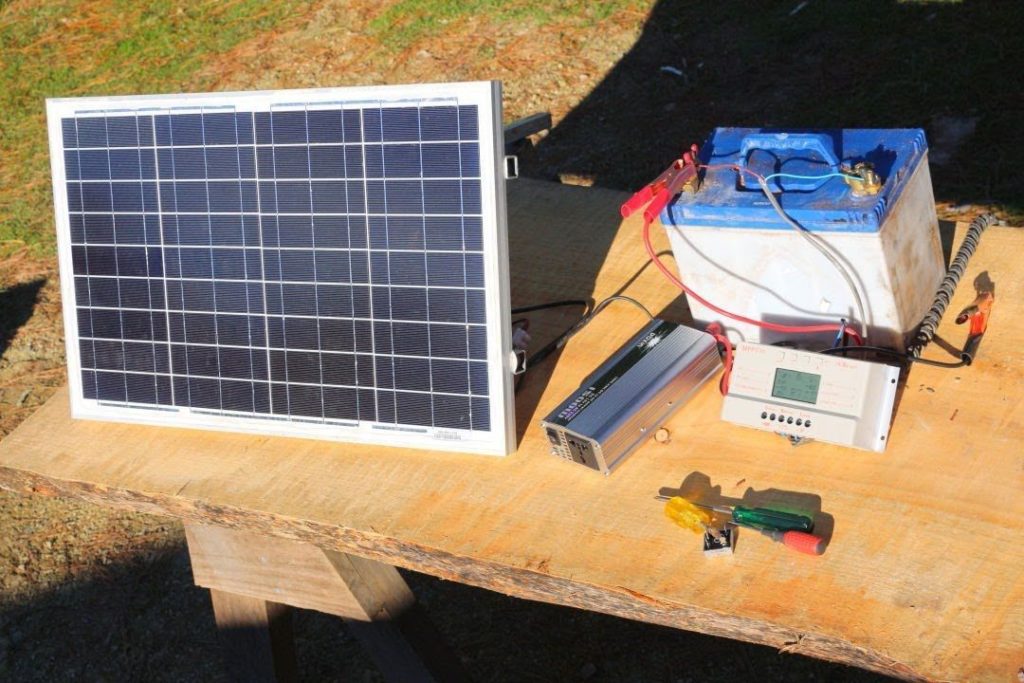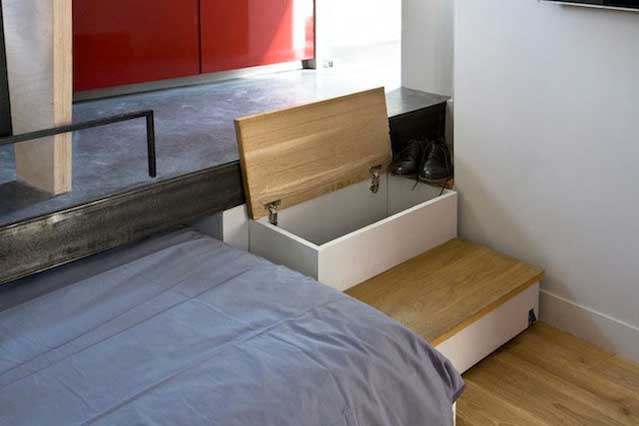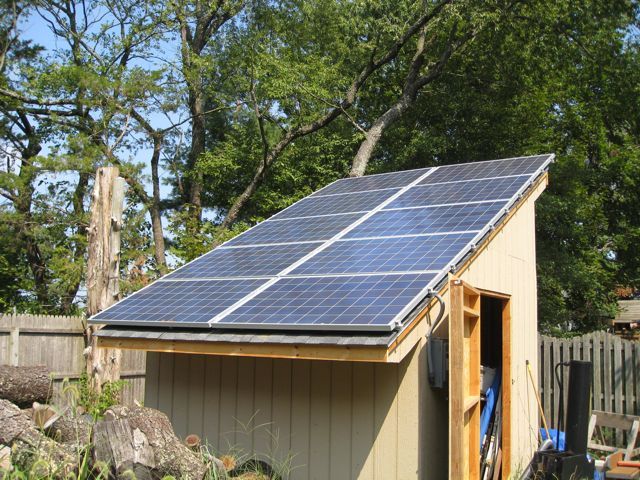When it comes to powering your tiny home during a grid outage, there are several options available.
One of the most reliable and effective solutions is to invest in a microgrid or battery backup system.
These systems can provide consistent and reliable power to your tiny home, even when the main grid is down.
With so many different types of microgrids and battery backups on the market, it’s important to understand the benefits and drawbacks of each option before making a decision.
We will explore the ins and outs of microgrid and battery backup systems specifically designed for tiny homes, giving you the knowledge you need to choose the best solution for your needs.
Understand your energy needs
Start by assessing your energy usage and identifying the essential appliances and systems you need to power during an outage. This will help you determine the appropriate size of your microgrid and battery backup system.
To start, you should assess your energy usage and identify the essential appliances and systems you need to power during an outage.
This includes lighting, heating and cooling systems, refrigeration, and any medical or communication devices that are critical to your daily life.
Next, you should consider the capacity of the essential appliances and systems, as well as the amount of energy they consume.
This will help you determine the appropriate size of your microgrid and battery backup system.
For example, if you have a large refrigerator that consumes a significant amount of energy, you will need a larger battery and microgrid to power it during an outage.
By taking an inventory of your energy needs and identifying the essential appliances and systems, you can ensure that your microgrid and battery backup system is adequately sized to meet your needs.
This will help you avoid purchasing a system that is too small, which can result in inconvenience and even safety risks during an outage.
Instead, you will have a reliable and efficient system that can power your essential appliances and systems, providing you with peace of mind and a sense of security.
Choose the right microgrid components
Select a combination of renewable energy sources such as solar panels, wind turbines, and/or biomass generators that are suitable for your location and energy needs. You may also consider using energy storage systems such as lithium-ion batteries or hydrogen fuel cells to store excess energy generated by your microgrid.
Choosing the right microgrid components is a important step towards creating a reliable and efficient energy system.
When selecting renewable energy sources, it’s essential to consider your location and energy needs.
For instance, solar panels are best suited for areas with abundant sunlight, while wind turbines are more suitable for areas with strong wind resources.
Biomass generators, on the other hand, can be an excellent option for areas with abundant organic waste materials.
It’s also important to consider energy storage systems such as lithium-ion batteries or hydrogen fuel cells to store excess energy generated by your microgrid.
These storage systems can help mitigate power fluctuations and provide a reliable source of energy during outages or grid failures.
It’s important to select components that are durable, low-maintenance, and easy to integrate with existing systems.
By carefully selecting the right microgrid components, you can create a robust and sustainable energy system that meets your needs and helps you achieve your energy goals.
Install a battery backup system
A battery backup system will provide a source of power during grid outages, allowing you to power essential appliances and systems. Choose a system that can provide enough power for at least 24 hours of operation, and consider using deep cycle batteries for longer lifespan and better performance.
Installing a battery backup system is a important step in ensuring that your home is well-prepared for grid outages.
This system will provide a reliable source of power, allowing you to continue operating essential appliances and systems, such as lights, refrigerators, and security systems, even when the grid is down.
When selecting a battery backup system, it is important to choose one that can provide enough power for at least 24 hours of operation.
This will ensure that you have enough power to last through the duration of the outage, and that you can maintain a sense of normalcy in your home.
In addition to choosing a system with enough power capacity, it is also important to consider using deep cycle batteries.
These batteries are specifically designed to provide long-lasting power, even in high-drain applications, and are built to withstand the rigors of frequent charge and discharge cycles.
By using deep cycle batteries, you can extend the lifespan of your battery backup system and ensure that it continues to perform optimally, even during extended power outages.
Overall, installing a battery backup system is a smart investment for any homeowner looking to mitigate the risks of grid outages and maintain a sense of normalcy in their home.
By choosing a system with enough power capacity and using deep cycle batteries, you can ensure that your home is well-prepared for any unexpected power disruptions.
Connect to the grid carefully
When connecting your microgrid to the grid, ensure that you follow safety guidelines and regulations to avoid electrocution or fires. It’s also important to ensure that your system is designed to seamlessly transition between grid power and microgrid power, with automatic switchover in case of a grid outage.
When connecting your microgrid to the grid, it is important to prioritize safety guidelines and regulations to avoid any potential electrocution or fires.
This includes ensuring that all electrical equipment is properly grounded, using surge protectors and circuit breakers, and ensuring that all wiring and connections are secure and well-maintained.
It is essential to ensure that your system is designed to seamlessly transition between grid power and microgrid power, with automatic switchover in case of a grid outage.
This will minimize any disruptions or inconvenience to your energy supply, while also providing a reliable and efficient source of power.
Proper installation, maintenance, and operation of your microgrid system are critical to ensuring safe and reliable operation, and it is recommended to seek the assistance of a qualified professional to ensure that all safety guidelines and regulations are being followed.
Monitor and control your system
Install a monitoring and control system that allows you to monitor your microgrid’s performance and adjust settings remotely. This will help you optimize your system’s performance and prevent overloading or underloading.
Monitoring and controlling your microgrid is important to ensure its optimal performance and prevent any issues that may arise.
With a robust monitoring and control system in place, you can remotely monitor your microgrid’s performance and make adjustments as needed.
This includes tracking energy production and consumption, managing energy storage and distribution, and adjusting energy demand based on load management strategies.
By continuously monitoring your microgrid’s performance, you can quickly identify any potential issues and take corrective action before they become major problems.
A remote monitoring and control system allows you to adjust settings and optimize your microgrid’s performance in real-time, preventing overloading or underloading and ensuring that your system operates at its maximum potential.
With the right monitoring and control system in place, you can ensure your microgrid runs smoothly and efficiently, maximizing its benefits for your community or business.
Consider energy efficiency
Efficient appliances and systems can help reduce your energy consumption and stretch the duration of your battery backup. Consider using energy-efficient appliances, lighting, and HVAC systems to maximize the performance of your microgrid.
To maximize the performance of your microgrid and stretch the duration of your battery backup, it’s essential to consider energy efficiency.
By installing energy-efficient appliances, lighting, and HVAC systems, you can significantly reduce your energy consumption and rely less on your battery backup.
For instance, energy-efficient LED lighting can reduce your lighting energy usage by up to 75%, while energy-efficient appliances can cut your energy consumption by up to 50%.
Upgrading to energy-efficient HVAC systems can help reduce your heating and cooling needs, further minimizing your energy usage.
By investing in energy-efficient technologies, you can not only reduce your energy consumption but also lower your operating costs and prolong the lifespan of your microgrid.
To further elaborate, energy-efficient appliances and systems can provide a range of benefits for your microgrid.
For instance, Energy Star-rated appliances use significantly less energy than traditional appliances, while smart thermostats can help optimize your HVAC usage and reduce wasteful energy consumption.
Installing occupancy sensors and smart lighting systems can help reduce energy waste by only powering devices when they’re needed.
By considering energy efficiency in your microgrid design, you can not only reduce your energy consumption but also minimize your maintenance needs and extend the lifespan of your equipment.
With the right energy-efficient technologies in place, you can create a reliable, sustainable, and cost-effective microgrid that meets your energy needs while also protecting the environment.
Plan for maintenance and repairs
Just like any other electrical system, your microgrid and battery backup system will require periodic maintenance and repairs. Plan for regular maintenance and have a backup plan in case of emergencies.
To ensure the long-term reliability and efficiency of your microgrid and battery backup system, it is essential to plan for regular maintenance and repairs.
This includes scheduling routine inspections and cleaning of the system’s components, such as the batteries, inverters, and switchgear.
It is important to have a backup plan in place in case of emergencies, such as power outages or system failures.
This may include having spare parts on hand, as well as contact information for qualified technicians who can provide timely and effective repairs.
Proactive planning for maintenance and repairs can help prevent costly downtime and ensure that your microgrid and battery backup system runs smoothly and efficiently over the long term.
Consider the future
As technology continues to evolve, consider how your microgrid and battery backup system may need to adapt to changes in the grid and your energy needs. Plan for future upgrades and expansions to ensure that your system continues to meet your needs.
As technology continues to evolve, it’s essential to consider how your microgrid and battery backup system may need to adapt to changes in the grid and your energy needs.
To ensure that your system continues to meet your requirements, plan for future upgrades and expansions.
For instance, as renewable energy sources become more prevalent, you may need to upgrade your system to accommodate the increased power output.
As your energy needs change over time, you may need to expand your battery backup capacity or add new energy storage solutions.
By considering these factors now, you can ensure that your microgrid and battery backup system remains a reliable and effective solution for your energy needs.
In the future, advancements in energy storage technologies could lead to more efficient and cost-effective solutions.
For example, solid-state batteries, which are more durable and have longer lifetimes than traditional lithium-ion batteries, may become more prevalent.
By planning for these upgrades and expansions, you can ensure that your system is always at the forefront of technology and ready to meet the changing demands of your energy needs.
Furthermore, as the grid becomes more decentralized and distributed, your microgrid and battery backup system may need to adapt to changes in the grid’s architecture.
For instance, as more renewable energy sources are integrated into the grid, you may need to adjust your system’s configuration to ensure that it can seamlessly integrate with these new sources.
By considering these potential changes now, you can ensure that your system remains flexible and adaptable to the evolving energy landscape.
Considering the future of your microgrid and battery backup system is important to ensuring that it remains a reliable and effective solution for your energy needs.
By planning for upgrades and expansions, and anticipating potential changes in the grid’s architecture, you can ensure that your system remains at the cutting edge of technology and ready to meet the changing demands of your energy needs.]]] As technology continues to advance, it is essential to consider the future of your microgrid and battery backup system.
While traditional lithium-ion batteries have been the norm for some time, newer, more efficient battery technologies, such as flow batteries and solid-state batteries, may become more prevalent in the future.
By planning for these potential upgrades and expansions, you can ensure that your system is always at the forefront of technology and ready to meet the changing demands of your energy needs.
Moreover, as the grid becomes more decentralized and distributed, your microgrid and battery backup system may need to adapt to changes in the grid’s architecture.
For example, as more renewable energy sources are integrated into the grid, you may need to adjust your system’s capacity and energy storage needs to accommodate these changes.
By considering the future of the grid and your energy needs, you can ensure that your microgrid and battery backup system remains adaptable, efficient, and always ready to meet the changing demands of your energy needs.
Want More? Dive Deeper Here!
Hey there! If you’re the type who loves going down the rabbit hole of information (like we do), you’re in the right spot. We’ve pulled together some cool reads and resources that dive a bit deeper into the stuff we chat about on our site. Whether you’re just killing time or super into the topic, these picks might just be what you’re looking for. Happy reading!






